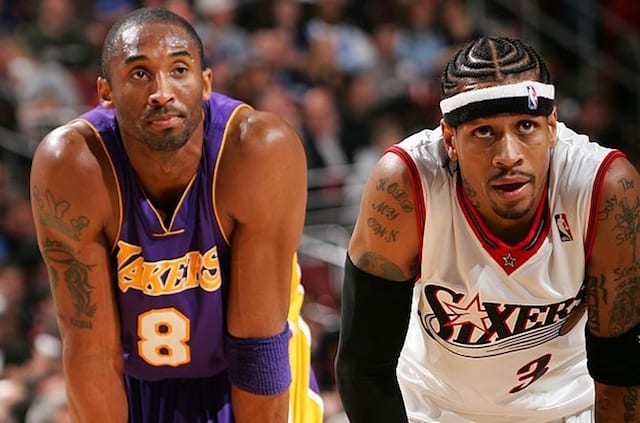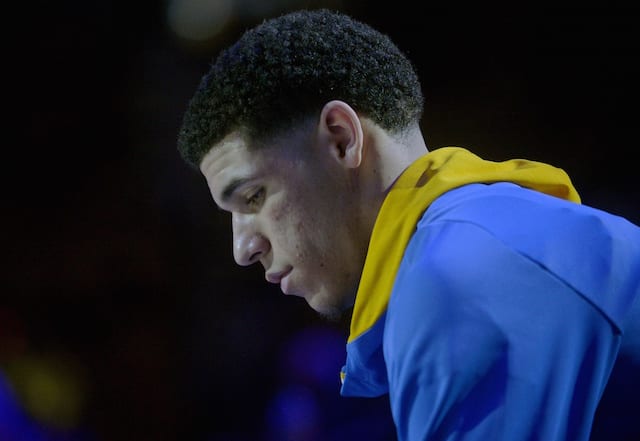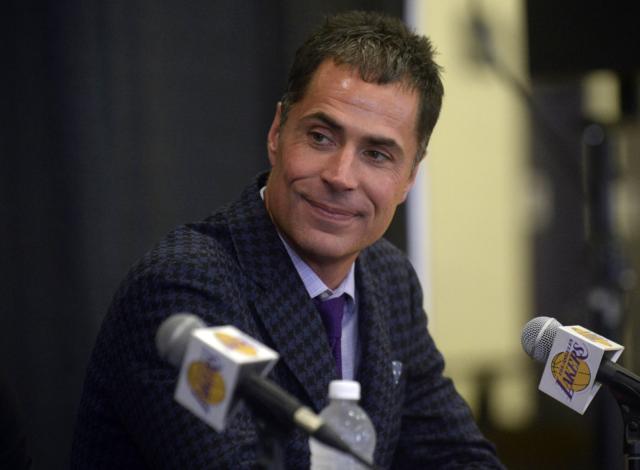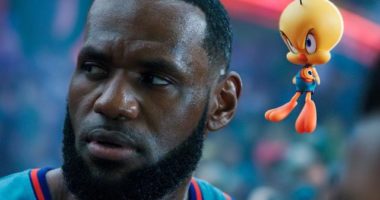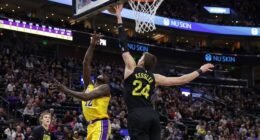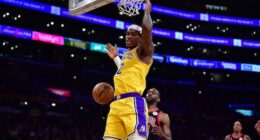Growing up watching Kobe Bryant play basketball is like growing up religious, at least for many die-hard Lakers fans. I’ve been a Lakers fan since I was nine years old, and much of my development into adulthood paralleled Kobe’s foray into NBA super-stardom, with all of its twists and turns.
It is hard to be a fan sometimes when your resident superstar is as famous for scandals in Colorado as he is for his jaw-dropping buzzer-beaters, but Lakers fans will defend their hero to the death because we know all that has been accomplished in these past 15 or so years. We remember, as J.A. Adande wrote in what seems forever ago, that when the situation is at its most unlikely, Kobe makes it likely.
Still, as Laker fans, the future cannot be too bright if all of the team’s wins are defaulted to the “unlikely” category, and if Kobe has to pull another “unlikely” shot out of his hat to win it the Lakers must not be doing so hot. The laws of nature demand finiteness, and Kobe’s ability to perform in the clutch, like anyone else, is limited. The best way for the Lakers to win is and always has been to feed the post, but recent statistics demonstrate that the Lakers have deviated from that strategy.
Out of the 560 shots that the Lakers have taken since the season opener, the Lakers have only taken 253 shots in the paint, accounting for only 45 percent. Considering that the highest percentage shots come from inside the paint, one would think the Lakers would play to their strengths. All hostility aside, the team’s east coast rivals seem to have gotten the message.
Exhibit A, the Miami Heat.
The Heat, in nearly the same amount of shot attempts, have taken 49 percent of their shots from down low. A four percent jump seems trivial, but consider this: that extra four percent totals an extra 22.4 shots, and at the Lakers’ current 62 percent in the paint, that equals 14 extra made buckets. You don’t think the Lakers could have used a few of those extra 28 points against the Bulls in that Christmas Day nail biter? Instead of relying on Kobe to come through again, the Lakers might have enjoyed a much greater lead, and the Lakers might have gotten the win they deserved.
Granted, all of this carries the humungous caveat that is Andrew Bynum. Bynum didn’t participate in those first four games due to suspension, and as a result, the Lakers primary low post option was riding the bench. You can’t dump the ball down low to a big who isn’t there, so we can cut the Lakers a little bit of slack.
After Bynum’s triumphant return however, the dogmas of jump shooting still took precedence over Bynum’s touches. It’s not as if Bynum can really complain: his usage rate of 29.3 is the highest of his career, dwarfing last season’s usage rate of 17.6. But that does not eliminate the fact that when Bynum gets the ball at the rim, there is a much greater chance of the ball going in than from any point or player on the court.
Win shares are a fancy little statistic that many pundits use to examine a player’s efficiency on the court, both offensively and defensively. The percentage a player receives demonstrates how much of a “win” can be attributed to that player’s performance. While the sample size is small, the Lakers’ best option for beating the competition is found in Andrew Bynum.
The Lakers would do well to emphasize Bynum’s touches, at least while he is still active (trade and injury talks constantly loom over Drew like a cloud). Kobe’s usage rate has also reached a career high (38.9), and he will not be able to sustain that for very long. The last time Kobe was featured this much in the offense, he was 27 years old and in the prime of his career. That Kobe and the Kobe we currently see are not the same people, and have to implement different strategies in order to win.
There has been much talk in recent days of Kobe’s shot selection, and while I’ve never played in an NBA game, the critiques do ring true. Kobe is at his best when he operates out of the post, generating much better offensive looks for himself and his teammates. If the Lakers are to have any hope against young, athletic teams like the Nuggets, Heat, and Thunder, they would do well to reduce the number of long rebounds and exploit their mismatches.
